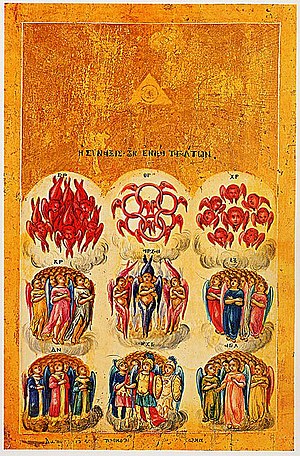
Angels have appeared in works of art since early Christian art, and they have been a popular subject for Byzantine and European paintings and sculpture.

Pseudo-Dionysius the Areopagite was a Greek author, Christian theologian and Neoplatonic philosopher of the late 5th to early 6th century, who wrote a set of works known as the Corpus Areopagiticum or Corpus Dionysiacum.

A cherub is one of the unearthly beings who directly attend to God, according to Abrahamic religions. The numerous depictions of cherubim assign to them many different roles, such as protecting the entrance of the Garden of Eden.
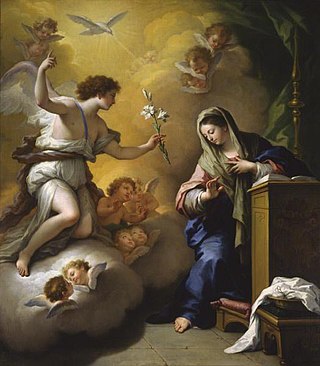
Archangels are the second-lowest rank of angel in the Christian hierarchy of angels, put forward by Pseudo-Dionysius the Areopagite in the 5th or 6th century in his book De Coelesti Hierarchia. The word "archangel" itself is usually associated with the Abrahamic religions, but beings that are very similar to archangels are found in a number of other religious traditions.
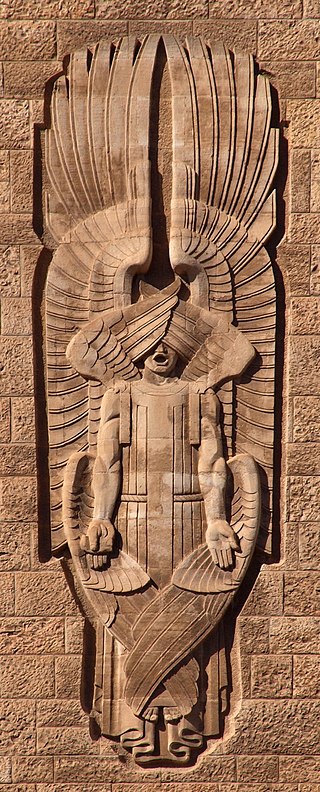
A seraph is a celestial or heavenly being originating in Ancient Judaism. The term plays a role in subsequent Judaism, Christianity, and Islam.

In Christianity, angels are the messengers of God.

In Christian angelology, thrones are a class of angels. This is based on an interpretation of Colossians 1:16. According to 1 Peter 3:21–22, Christ had gone to Heaven and "angels and authorities and powers" had been made subject to him.
The Testament of Adam is a Christian work of Old Testament pseudepigrapha that dates from the 2nd to 5th centuries AD in origin, perhaps composed within the Christian communities of Syria. It purports to relate the final words of Adam to his son Seth; Seth records the Testament and then buries the account in the legendary Cave of Treasures. Adam speaks of prayer and which parts of Creation praise God each hour of the day; he then prophesies both the coming of the Messiah and the Great Flood; and finally, a description of the celestial hierarchy of angels is given.
In some occult and similar writings, an archdemon, archdevil, or archfiend is a spiritual entity prominent in the infernal hierarchy as a leader of demons. Essentially, the archdemons are the evil opponents of the archangels.

The ophanim, alternatively spelled auphanim or ofanim, and also called galgalim, refer to the wheels seen in Ezekiel's vision of the chariot in Ezekiel 1:15–21. One of the Dead Sea scrolls (4Q405) construes them as angels; late sections of the Book of Enoch portray them as a class of celestial beings who never sleep, but guard the throne of God. In Christian angelology, they are one of the choirs (classes) of angels, and are also identified as Thrones.

The concept of Seven Archangels is found in some works of early Jewish literature and in Christianity. In those texts, they are referenced as the angels who serve God directly.

De Coelesti Hierarchia is a Pseudo-Dionysian work on angelology, written in Greek and dated to ca. AD the 5th century; it exerted great influence on scholasticism and treats at great length the hierarchies of angels.
Emanation is a belief, found in Neoplatonism, that the cause of certain beings or states of being consists of an overflow from the essence of God or other higher spiritual beings, as opposed to a special act of creation. This overflow is usually conceived in a non-temporal way as a permanent relationship of causation rather than as an event causing an entity to come into existence at a given point in time. The word "emanation" can refer either to the process of emanation or to the thing emanated.
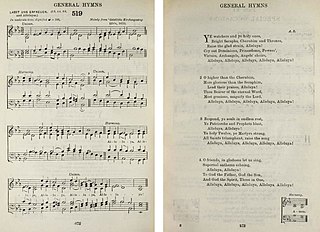
"Ye Watchers and Ye Holy Ones" is a popular Christian hymn with text by Athelstan Riley, first published in the English Hymnal (1906). It is sung to the German tune Lasst uns erfreuen (1623). Its uplifting melody and repeated "Alleluias" make this a favourite Anglo-Catholic hymn during the Easter season, the Feast of All Saints, and other times of great rejoicing.
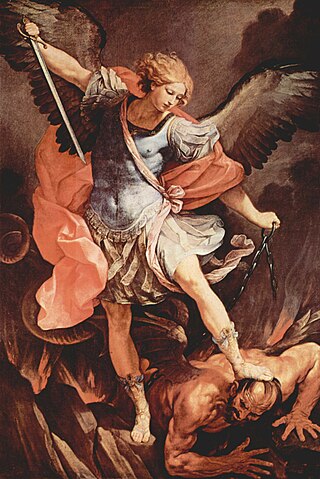
The Chaplet of Saint Michael the Archangel, also called the Rosary of the Angels, is a chaplet approved by Pope Pius IX in 1851.
Shamayim is the dwelling place of God and other heavenly beings according to the Bible. It is one of three components of the biblical cosmology. There are two other ones. Eretz (Earth), home of the living, and sheol, the realm of the dead—including, according to post Hebrew-Bible literature, the abode of the righteous dead.

In Abrahamic religious traditions and some sects of other belief-systems like Hinduism and Buddhism, an angel is a heavenly supernatural or spiritual being. In monotheistic belief-systems, such beings are under service of the supreme deity.
Celestial hierarchy can refer to:

Bearers of the Throne or also known as ḥamlat al-arsh, are a group of angels in Islam.

The Mosaic ceiling of the Florence Baptistery is a set of mosaics covering the internal dome and apses of the Baptistery of Florence. It is one of the most important cycles of medieval Italian mosaics, created between 1225 and around 1330 using designs by major Florentine painters such as Cimabue, Coppo di Marcovaldo, Meliore and the Master of the Magdalen, probably by mosaicists from Venice.

